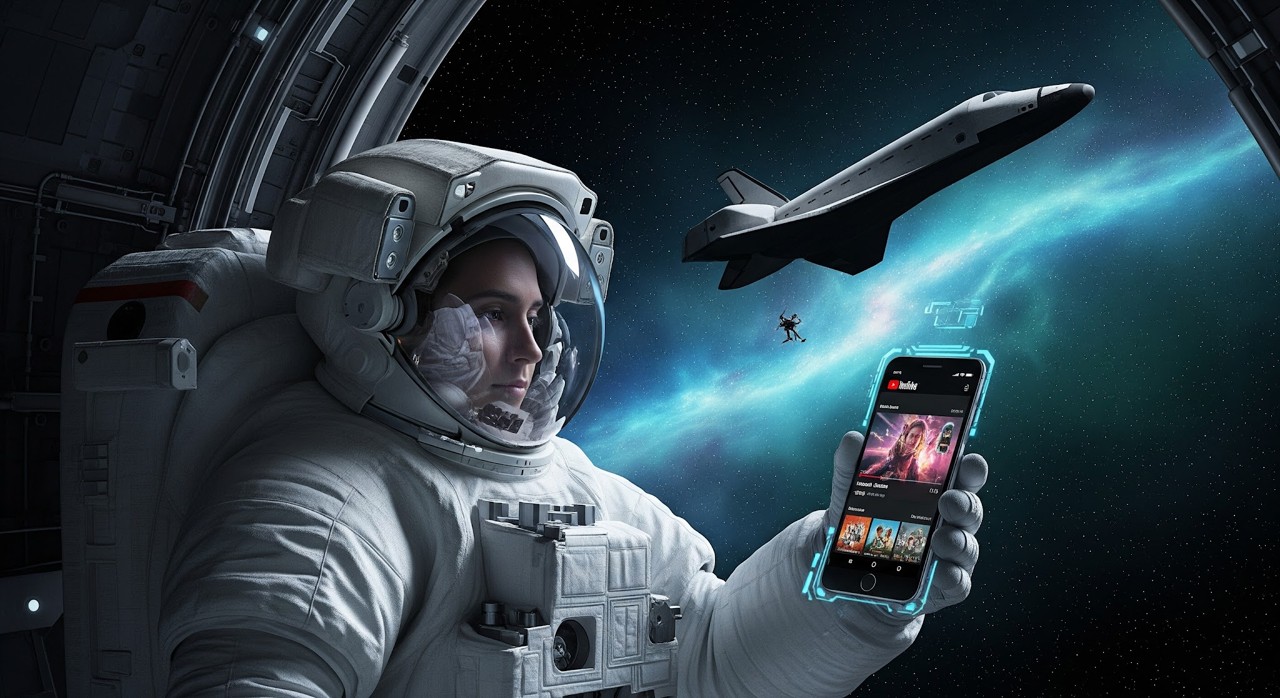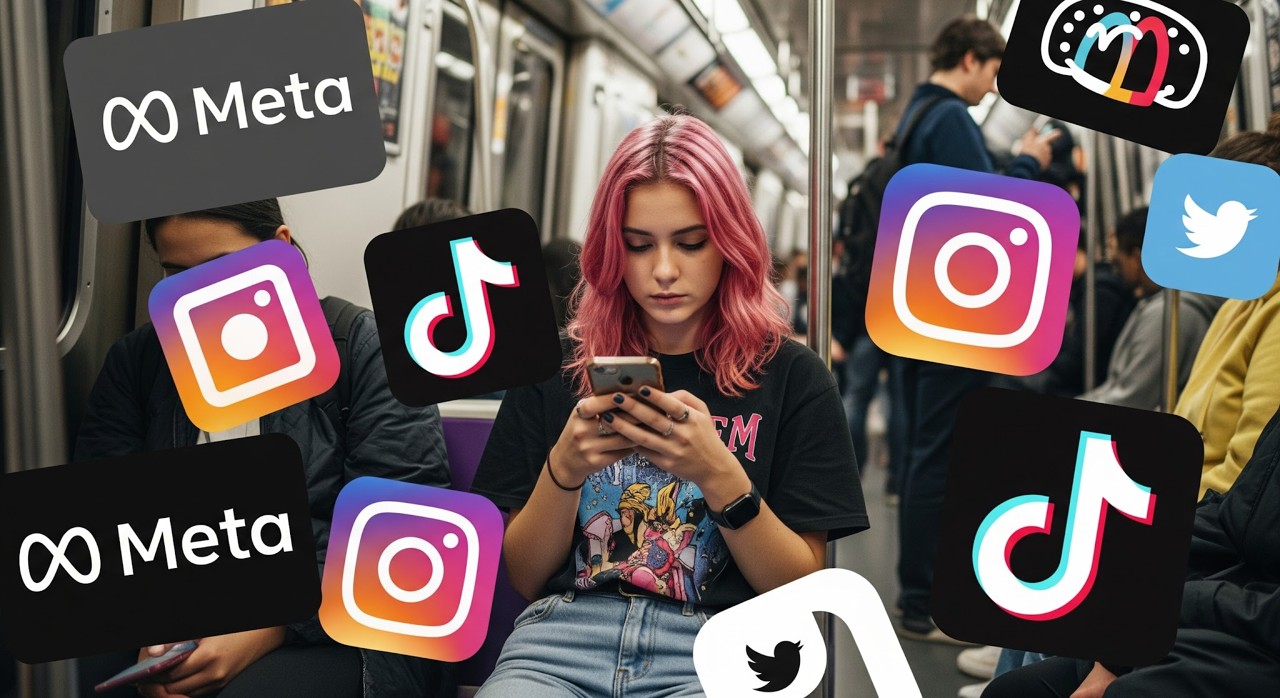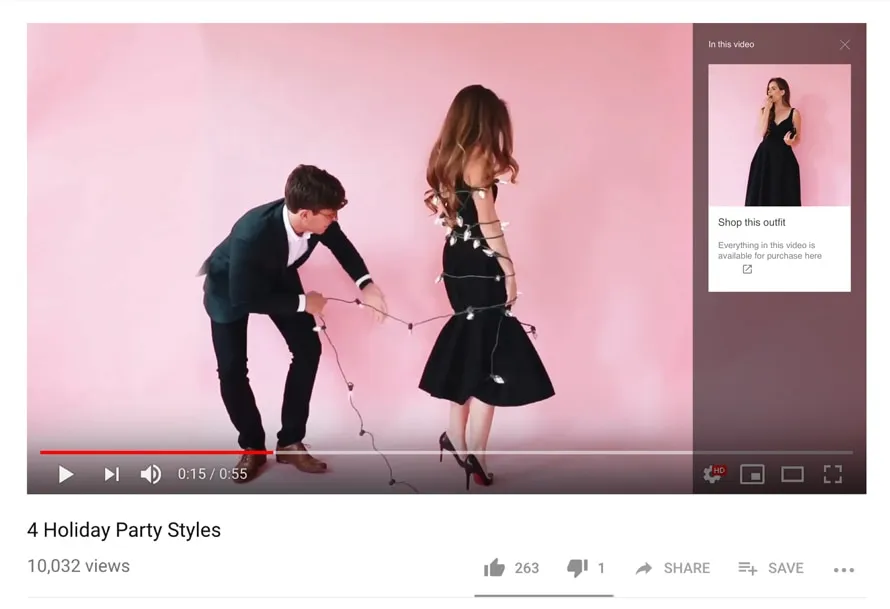17 min to read
By Bruno Gavino, CEO, Codedesign
YouTube's Leap into Hyper-Contextual AI Advertising.

I’ve seen my share of shifts. However, YouTube's recent announcements around its new AI-driven advertising features feel particularly significant and science fiction. We're not just talking about minor tweaks here; these are potentially game-changing innovations. The platform has unveiled a suite of tools, most notably AI-powered contextual ads, exemplified by a feature dubbed "Peak Points," and new "Cultural Moment Sponsorships". These developments signal a clear move towards a more nuanced, intelligent, and, frankly, more complex advertising ecosystem on the world's largest video platform.
Why This Matters to You: A CEO's Perspective on Navigating the Next Wave.
For fellow CEOs, senior marketers, and growth-stage founders, the critical question is always: "What does this mean for my business?" I get it. We need to cut through the industry buzz and identify the tangible opportunities and potential pitfalls. These new YouTube AI-Powered Contextual Ads represent both. They offer the promise of unprecedented ad relevance and engagement but also introduce new challenges in terms of strategy, creative execution, and ethical considerations. The core business objectives remain: enhancing engagement, improving ROI, staying ahead of the competition, and future-proofing our marketing strategies. YouTube's latest offerings are poised to impact all of these.
Setting the Stage: Understanding "YouTube AI-Powered Contextual Ads" and Their Potential.
At its heart, the term YouTube AI-Powered Contextual Ads refers to a sophisticated approach where artificial intelligence, particularly powerful models like Google's Gemini, is used to analyze video content far beyond simple keywords. This allows for ad placements that are not just topically related but are aligned with the specific context, sentiment, and even the emotional engagement levels of viewers at precise moments within a video. This is a significant leap from traditional contextual targeting, which often relied on broader categorizations. The potential here is to move from merely targeting content to targeting moments and emotional states, creating a much deeper, and potentially more impactful, connection with the audience. This article aims to provide an in-depth, actionable analysis of these new features, their broader implications for digital marketing, and how your business can strategically leverage them.
My goal is to offer insights with the depth and clarity you'd expect from a leading consultancy, tailored for practical application. The convergence of AI in content analysis and ad delivery is accelerating, moving beyond simple keyword matching to a nuanced understanding of context and emotional engagement. This isn't just about showing an ad for a baking product on a cooking video; it's about understanding the exact moment of triumph when a cake comes out perfectly, or the frustration when a recipe goes wrong, and aligning the ad's message accordingly. This shift signifies a deeper integration of advertising into the content consumption experience, demanding a more sophisticated approach from all of us.
Decoding YouTube's AI-Powered Contextual Ads: The "Peak Points" Revolution
One of the most talked-about innovations is "Peak Points." This feature is designed to leverage AI to place ads at moments of maximum viewer engagement within a video. It’s a bold move, aiming to capitalize on heightened attention, but it also walks a fine line.
What Exactly Are "Peak Points"? Gemini AI Meets Emotional Engagement.
"Peak Points" is YouTube's new ad product that employs Google's advanced AI model, Gemini, to identify moments of high emotional engagement or "peaks" within video content. The AI analyzes various elements, including video frames, transcripts, and potentially other cues like vocal tone and even inferred facial expressions, to pinpoint these optimal ad insertion opportunities. The idea is to serve an ad precisely when the audience is most "locked in" or attentive, such as immediately after a dramatic reveal, a heartfelt moment, or the climax of a story. For instance, YouTube's own example showed an ad placement recommended right after a ski-slope marriage proposal.
The Upside for Advertisers: Precision Targeting and Enhanced Impact with YouTube AI-Powered Contextual Ads.
For advertisers, the allure of "Peak Points" is clear. The system promises a new level of precision in reaching engaged audiences. By placing ads during moments of heightened emotional connection or attention, the potential benefits include:
- Increased Ad Relevance: Ads are not just contextually related to the video's topic but to the viewer's immediate state of engagement.
- Higher Engagement Rates: A captive audience is more likely to notice and interact with an ad. One case study on YouTube Shorts using AI-driven contextual advertising for a chocolate brand reported a 30% higher engagement rate.
- Improved Brand Recall: Emotion plays a powerful role in memory formation. Ads shown during emotionally charged moments may be remembered more vividly. Research consistently shows that advertising with an emotional appeal tends to outperform purely rational messaging , and ads that generate an emotional response often see increased brand recognition and engagement.
-
Potentially Better ROI: More effective ad placements should, in theory, lead to a better return on investment.
This is essentially an evolution of emotion-based targeting, moving from general sentiment analysis to pinpointing specific emotional peaks within content. The ability to deliver "smarter placements" based on true thematic and emotional context, rather than just keywords, is a significant step forward.

The Viewer's Perspective: Balancing Engagement with Intrusion – The Ethical Tightrope of "Peak Points".
However, this is where things get tricky. While advertisers might celebrate the precision, viewers could have a very different reaction. There are significant concerns that "Peak Points" ads could be perceived as highly intrusive, appearing at "the absolute worst time" for viewers. Imagine being deeply engrossed in an emotional climax, only to be abruptly interrupted by a commercial. This could lead to frustration, annoyance, and negative sentiment towards both YouTube and the advertised brand.
The critique of "emotional manipulation" is also valid and warrants serious consideration. Targeting individuals when they are emotionally vulnerable raises ethical questions about responsible advertising practices. A key unknown that exacerbates this concern is whether these "Peak Point" ads will be skippable. If viewers are forced to watch an ad during a crucial moment, the backlash could be substantial. We already know that some users resort to ad blockers or abandon platforms when advertising becomes overly aggressive.
The very effectiveness of "Peak Points" is therefore balanced on a knife's edge. The AI aims for relevance, but the subjective experience of an "emotional peak" and the nature of the interruption itself mean that if this isn't handled with extreme care, it could easily backfire. If viewers feel their emotional engagement is being exploited, or if the ad itself is tonally jarring, any recall benefits could be overshadowed by negative brand association. The lack of clarity on skippability is a major factor here.
Furthermore, there's a subtle but important potential consequence for content itself. If "Peak Points" ad placements become particularly lucrative for creators due to higher CPMs (a reasonable assumption if they prove effective for advertisers), we might see a shift in how content is produced. Creators, understandably motivated by revenue, could begin to consciously structure their videos to include more "AI-identifiable" peak emotional moments. This could manifest as more exaggerated reactions, forced dramatic pauses, or predictable emotional arcs designed to trigger the AI for ad insertion. The risk here is a potential homogenization of content, or a "gamification" of emotional expression, where authenticity is sacrificed for monetization. Viewers are savvy and may become adept at spotting these engineered moments, leading to cynicism rather than engagement.
Riding the Wave: Capitalizing on YouTube's Cultural Moment Sponsorships
Beyond the micro-targeting of "Peak Points," YouTube is also offering brands a macro-level opportunity to align with zeitgeist through "Cultural Moment Sponsorships." This is about capturing collective attention during significant events.
Beyond the Banner Ad: What Are Cultural Moment Sponsorships on YouTube?
Cultural Moment Sponsorships are packaged opportunities for brands to "own the conversation" around specific, widely recognized events. Think major sporting events like The PGA Championship, retail rushes like Black Friday, or entertainment spectacles like awards season. The objective is to tap into the heightened audience engagement, shared experience, and relevance that these moments naturally generate. YouTube is positioning itself as a central hub for these cultural discussions, leveraging its impressive statistic of ranking No. 1 in streaming watch time for over two years, according to Nielsen data. This strategy directly addresses the challenge of audience fragmentation by allowing brands to connect with large, focused audiences during periods of intense collective interest.
Strategic Alignment: How to Integrate Cultural Moments into Your Marketing DNA.
Successfully leveraging these sponsorships requires more than just slapping a logo on event-related content. Authenticity and deep integration are paramount; the brand's presence must feel like an organic part of the cultural moment itself, not an awkward add-on.
Several strategies can help achieve this:
- Use YouTube's Tools: Platforms like Insights Finder can help brands identify trending content, popular creators, and audience preferences related to a cultural moment, informing a more targeted approach.
- Maximize Impact with Premium Placements: Options like "Spotlight" (offering high share of voice on trending event content) and "First Position" (securing the first ad spot viewers see) can significantly boost visibility. IHG Hotels & Resorts, for example, successfully used Takeovers and First Position during major sporting events to reach luxury travelers, leading to lifts in awareness and search interest. Similarly, Discover Financial Services used Spotlight and First Position around the Outside Lands festival to boost message association.
- Embrace Creator Collaborations and User-Generated Content (UGC): Involving creators who are already influential within the context of the cultural moment can lend authenticity and amplify reach. Dunkin', for instance, partnered with Shorts creators to connect with Gen Z consumers and generate positive sentiment during holiday periods.
- Plan Early and Understand the Ecosystem: Cultural moments are rarely just about the main event; they encompass a "surround sound" of online reactions, discussions, and related content. Brands need to plan their engagement strategy well in advance to capture this broader conversation.
Proving Value: Measuring the ROI of YouTube Cultural Moment Campaigns.
The return on investment for Cultural Moment Sponsorships is often multifaceted, extending beyond immediate sales figures to include crucial brand-building metrics. Key Performance Indicators (KPIs) to track include:
- Brand Lift: Measuring changes in ad recall, brand awareness, and consideration among the target audience exposed to the sponsorship. Google's Brand Lift tool can be invaluable here.
- Engagement Metrics: Tracking views, shares, comments, and likes on sponsored content and related brand messaging.
- Sentiment Analysis: Monitoring social media and online discussions to gauge public perception of the brand in relation to the event.
- Reach and Share of Voice: Assessing the brand's visibility and prominence within the target demographic during the event.
- Conversions: Where applicable, particularly if shoppable elements like YouTube's Shoppable CTV are integrated into the sponsorship, tracking direct sales or leads is crucial. YouTube CTV campaigns, for example, drove over 50 million average monthly conversions in the US during Q4 2024.
- Earned Media Value: Quantifying the additional exposure generated through organic mentions, press coverage, and social buzz stemming from the sponsorship.
The true value of these sponsorships often lies in embedding the brand within the cultural narrative. This has longer-term equity implications that are harder to measure but incredibly valuable. It’s about building brand salience, becoming part of the consumer's cultural lexicon, much like iconic Super Bowl ads achieve. Therefore, marketers should adopt a longer-term perspective, looking at trends in brand search volume, social listening data, and qualitative feedback alongside direct response KPIs.
The following table provides a high-level overview of these new YouTube advertising features:
Table 1: Overview of YouTube's New AI-Powered Advertising Features
| Feature | Core AI Technology (Example) | Primary Advertiser Benefit | Key Consideration/Challenge |
|---|---|---|---|
| Peak Points | Google Gemini | Enhanced engagement, precision targeting at emotional highs | Viewer intrusiveness, potential for negative emotional impact |
| Cultural Moment Sponsorships | N/A (Strategic Packaging) | Brand association with key events, broad relevant reach | Authentic integration, measuring multi-faceted ROI |
| Shoppable CTV | AI for product feeds/UX | Direct sales from video ads, seamless purchase journey | Seamless user experience, inventory management |
Actionable Strategies for Dominating YouTube's New AI Ad Landscape
Understanding these new features is one thing; effectively leveraging them is another. As your CEO partner in digital marketing, I want to provide concrete, actionable advice.
Mastering Contextual Targeting: Best Practices for YouTube AI-Powered Contextual Ads.
The shift to AI-powered contextual targeting means moving beyond simple keyword matching to a deeper understanding of themes, sentiment, and even visual elements within video content. With 73% of consumers stating they prefer ads that are relevant to the content they're viewing, the imperative is clear.
Here are some best practices:
- Align Ad Creative Tightly with Context: For YouTube AI-Powered Contextual Ads to be effective, the creative must resonate with the identified context. On YouTube Shorts, this means grabbing attention within the first few seconds and delivering immediate relevance, as users scroll rapidly.
- Leverage Google AI for Ad Creation and Optimization: Google offers AI-powered tools that can assist with various aspects of video ad creation. These include repackaging existing static images and text into video ads, automatically flipping horizontal videos to vertical or square formats (crucial for Shorts and cross-platform consistency), trimming longer videos into shorter, impactful bumper ads, and easily adding voice-overs. Advertisers who included at least one video of each orientation (horizontal, vertical, and square) in their Performance Max Campaigns saw 20% more conversions on YouTube compared to those using horizontal videos alone.
-
Define Clear Campaign Objectives: Whether your goal is awareness, consideration, or driving online conversions, clearly defining your objective allows Google's AI to optimize campaigns effectively.
- For awareness, Video reach campaigns are recommended, which have shown to deliver approximately 16% lower CPMs and up to 44% more reach for advertisers using an AI-powered mix of Efficient Reach formats.
- For consideration, Video view campaigns can scale across in-stream, in-feed, and Shorts to maximize views at the lowest cost, achieving on average 40% more views than traditional in-stream skippable cost-per-view campaigns in early testing.
- For driving online conversions, Video action campaigns automatically scale ads with prominent calls-to-action across YouTube surfaces, potentially boosting conversions by up to 20% with optimized AI targeting.
- Continuously Test and Refine: The AI learns and improves over time, but it needs data. Regularly test different ad creatives, targeting parameters, and contextual alignments to feed the AI and optimize performance.
For a deeper dive into AI's role in modern marketing, explore our comprehensive guide on.

Creative is Still King: Designing Ads for "Peak Points" and Emotionally Resonant Placements.
Even with the most sophisticated AI identifying the "perfect moment," the ad creative itself remains the ultimate determinant of success or failure. This is especially true for "Peak Points," where the ad is placed immediately following a moment of heightened emotional engagement. The creative must be exceptionally well-calibrated to the emotional tone of the preceding content.
Consider these creative guidelines:
- Authenticity and Empathy: The ad must feel genuine and avoid any perception of exploiting the viewer's emotional state. A misjudged tone can lead to backlash.
- Match the Moment's Intensity (or Offer Respite): The creative should either match the emotional intensity of the "peak moment" or offer a gentle transition. A jarring, loud, or tonally dissonant ad will likely be poorly received. For example, after a highly suspenseful moment, an ad that offers a sense of relief or a solution might be more effective than one that amplifies anxiety.
- Ad Length and Pacing: Shorter, punchier ads might be suitable for quick emotional beats, while longer, more narrative-driven ads could work if the "peak moment" leads into a more reflective ad experience.
- Visuals, Music, and Storytelling: These elements are crucial. Use visuals that are contextually appropriate, music that complements the viewer's likely emotional state, and storytelling that resonates without being intrusive.
- A/B Test: The optimal creative for an ad following a joyful peak will likely differ from one following a moment of surprise or tension. Continuous A/B testing of different creative approaches is essential.
- Leverage AI for Creative Assistance, with Human Oversight: AI tools can assist in generating ad copy, suggesting visuals, or even creating video elements. However, human judgment and creative oversight are crucial to ensure the output is appropriate, empathetic, and on-brand, especially for these sensitive placements.
Creative for "Peak Points" necessitates a new level of "emotional intelligence" in ad design. Brands cannot simply repurpose standard ad creatives. They need ads that subtly acknowledge or align with the viewer's heightened emotional state. This isn't about explicitly referencing the video's content, but about ensuring the ad's tone, pacing, and message feel congruent and respectful of the viewer's experience. This demands much closer collaboration between media buying teams, who are targeting these specific moments, and creative teams, who must design ads fit for these unique contexts. It may also necessitate developing a broader portfolio of creative assets to match diverse emotional scenarios.
The Data Doesn't Lie: Key Metrics for Analyzing Performance of YouTube's AI Ad Features.
Measuring the success of these innovative AI-driven ad formats requires looking beyond standard metrics like Cost Per View (CPV), Click-Through Rate (CTR), and Conversion Rate. While these are foundational, they don't tell the whole story, especially when dealing with emotionally charged placements or broad cultural alignments.
For "Peak Points," consider tracking:
- View-Through Rates (VTR) and Completion Rates: Specifically for ads placed at these AI-identified peak moments. Are viewers watching them through, or are they a point of immediate frustration and skip (if skippable)?
- Engagement Metrics: Likes, comments (if applicable to the ad format), and shares of the ad itself, or sentiment expressed in the comments of the video where the ad appeared.
- Brand Lift Studies: Crucially important for "Peak Points." Focus on metrics like ad recall, brand awareness, and, critically, brand sentiment after exposure in these emotional contexts. Did the ad enhance or detract from brand perception?
- Audience Retention on Main Content: Do viewers tend to drop off from the primary video after a "Peak Point" ad is shown, or do they continue watching? This can indicate the level of disruption.
For Cultural Moment Sponsorships, focus on:
- Share of Voice (SOV): The brand's visibility and prominence during the cultural event compared to competitors.
- Sentiment Analysis: Tracking brand mentions and associated sentiment across social media and online news related to the event.
- Earned Media Value (EMV) and Social Buzz: Quantifying the organic amplification and discussion generated by the sponsorship.
- Traffic Uplift: Measuring increases in traffic to brand websites, landing pages, or social profiles from event-related content and ads.
- Lead Generation and Sales Impact: Particularly for events like Black Friday or product launch tie-ins.
Utilize Google Ads reports such as the Placements report (to see where ads appeared, including specific YouTube channels), Topics report, and Keywords report to monitor overall contextual performance. Google’s free Brand Lift tool can provide insights into awareness and consideration shifts, while Video Creative Analytics can help understand where viewers drop off in your ads.
Measuring these new AI ad features effectively requires a blended approach. Standard performance metrics are the baseline, but they must be augmented with more nuanced qualitative measures and brand-impact studies. For "Peak Points" in particular, where viewer sentiment is so critical, simply looking at conversion data won't capture potential negative brand impact if an ad was perceived as overly intrusive or manipulative. Agencies and internal marketing teams must be equipped to analyze and report on this broader spectrum of impact.
To understand more about measuring digital advertising effectiveness, check out our article on.
The following table outlines key KPIs relevant to these new ad formats:
Table 2: Strategic KPIs for YouTube's AI-Driven Ad Formats
| KPI Category | Specific Metric | Relevance to New Features (PP, CM, SC*) | Measurement Notes/Tools |
|---|---|---|---|
| Contextual Relevance | Ad-Content Sentiment Match | PP, CM | AI-powered sentiment analysis tools, manual review |
| Emotional Impact | Brand Recall Post-Emotional Peak | PP | Brand Lift studies, post-exposure surveys |
|
|
Viewer Sentiment Post-Peak Ad | PP | Social listening, comment analysis on video |
| Engagement at Peak | Interaction Rate with Peak Point Ad (if applicable) | PP | YouTube Analytics, Google Ads reports |
|
|
Video Ad Completion Rate at Peak Point | PP | YouTube Analytics |
| Cultural Alignment | Share of Voice during Cultural Event | CM | Media monitoring tools, competitive analysis |
|
|
Brand Association with Cultural Moment | CM | Brand Lift studies, surveys |
|
|
Earned Media Value from Sponsorship | CM | PR value calculators, social listening |
| Conversion Efficiency | Conversion Rate from Shoppable CTV | SC | YouTube Analytics, Google Ads conversion tracking, e-commerce platform analytics |
|
|
ROAS for AI-driven campaigns | PP, CM, SC | Google Ads, internal sales data |
| Audience Behavior | Audience Retention after Peak Point Ad | PP | YouTube Analytics |
*PP = Peak Points, CM = Cultural Moments, SC = Shoppable CTV
The Bigger Picture: YouTube's AI Ads in the Evolving Digital Marketing Ecosystem
YouTube's latest AI-driven advertising features don't exist in a vacuum. They are part of a broader evolution in digital marketing, where AI, contextual relevance, and direct commerce are increasingly intertwined.
YouTube, Meta, TikTok: A Comparative Glance at AI-Driven Ad Innovation.
It's useful to see how YouTube's approach with its YouTube AI-Powered Contextual Ads, particularly the Gemini-powered "Peak Points" and contextual Shorts ads, stacks up against other major players:
- Meta (Facebook/Instagram): Meta's Advantage+ suite heavily utilizes AI for automating creative generation, optimizing ad placements, and refining audience targeting based on user behavior and interaction data within its vast social graph. Their AI often focuses on personalizing ad delivery to individual users across their feeds and stories, leveraging deep user profile data.
- TikTok: TikTok's AI is renowned for its powerful recommendation engine that drives the "For You Page," making it exceptionally good at surfacing viral content and aligning ads with emerging trends. Their ad solutions, like Smart Performance campaigns, leverage this trend-based understanding and in-app behavior for targeting, particularly for short-form video engagement.
- YouTube/Google: YouTube, backed by Google's immense search and intent data, brings a different dimension. "Peak Points" represents a move towards hyper-contextual, in-video moment targeting, analyzing the nuances of specific video content rather than just broader user behavior or trends. YouTube's ecosystem also spans long-form content, Shorts, and a rapidly growing Connected TV (CTV) presence, offering diverse canvases for these AI-powered ads.
In terms of advertiser control versus AI automation, platforms are generally moving towards more automation, but the degree varies. While Meta's Advantage+ and TikTok's Smart Performance campaigns lean heavily on AI for audience and creative optimization, YouTube's "Peak Points" seems to offer a more granular AI intervention focused on when and where within specific content an ad is placed, which is a distinct approach.
The following table offers a comparative glance:
Table 3: AI in Advertising: YouTube vs. Key Competitors (Meta, TikTok)
| Platform | Flagship AI Ad Technology/Approach | Primary Focus of AI | Key Data Leverage | Perceived Advertiser Control vs. AI Automation Balance |
|---|---|---|---|---|
| YouTube/Google | Gemini AI (for Peak Points, contextual analysis), Google AI suite | In-video contextual & emotional relevance, cross-format optimization (long-form, Shorts, CTV) | Search history, YouTube view history, content analysis | AI identifies precise moments; advertisers still control creative & broader campaign strategy. Growing automation in campaign types (e.g., PMax). |
| Meta | Advantage+ suite, Andromeda AI targeting | Audience behavior prediction, creative automation, dynamic personalization | Social graph, user interactions, demographic data | High degree of AI automation in audience selection and creative delivery, with advertisers providing assets and objectives. |
| TikTok | "For You Page" Algorithm, Smart Performance Campaigns | Trend-driven discovery, short-form video engagement, behavioral targeting | In-app user behavior, content interaction, trends | Strong AI lead in content discovery and ad matching to trends; advertisers focus on creating platform-native, engaging creative. |
The Future is Now: AI, Context, Shoppable Video, and the Next Frontier of Advertising.
We are witnessing a clear convergence: AI-driven contextual relevance, sophisticated emotional targeting, and direct commerce opportunities like YouTube's Shoppable CTV are merging. This creates a more integrated and potentially seamless path from content discovery and engagement to actual purchase, all within the same platform.
The future of video advertising is undeniably moving towards greater contextual understanding and personalization, shifting away from reliance on broad demographic targeting or third-party cookies. AI will continue to be the engine driving this evolution, refining ad creation, placement, and optimization to make campaigns more efficient and, hopefully, more genuinely effective.
However, as AI's role deepens, ethical considerations and data privacy concerns will remain paramount and must be proactively addressed by platforms and advertisers alike.
The introduction of sophisticated AI like Gemini for highly granular ad placement, as seen with "Peak Points," signals a potential future where ad buying shifts significantly. Instead of primarily targeting broad content categories or channels, advertisers might increasingly target specific engagement signatures or emotional patterns within diverse content. This implies that an advertiser isn't just buying against "a home renovation video" but potentially "against the moment of joyful reveal after a successful DIY project" across any relevant video that exhibits this signature. This would require AI to not only understand the content itself but also to predict and identify nuanced viewer responses at a massive scale. Such a shift would make media planning vastly more complex and dynamic, and creative versioning would need to become incredibly agile to match these hyper-specific placements. The definition of "brand safety" also evolves, as it's no longer just about the overall topic of a video but the precise emotional context of each ad insertion.
Conclusion:
Key Takeaways: Summarizing the transformative potential and strategic imperatives of YouTube's AI ad innovations.
YouTube's introduction of AI-Powered Contextual Ads, particularly "Peak Points" and enhanced Cultural Moment Sponsorships, marks a significant evolution in digital advertising. These tools offer the promise of unprecedented precision in reaching engaged audiences and aligning with relevant contexts. However, they also bring new complexities and demand a greater degree of strategic foresight, creative adaptability, and ethical diligence from marketers. The power of AI like Gemini to dissect content and identify moments of peak emotional engagement is transformative, but it must be wielded responsibly.
My Final Word: Embracing AI with a human-centric, data-driven approach is key to winning.
As CEO of Codedesign, my perspective is that the future isn't about AI replacing marketers; it's about AI empowering us to be smarter, more empathetic, and ultimately more effective. These new YouTube features underscore that. Data and analytics are the bedrock of modern marketing, and these AI tools provide even richer data streams. But understanding human emotion, cultural nuances, and the art of storytelling remains indispensable. The most successful brands will be those that can skillfully blend AI's analytical power with genuine human insight and creativity, always prioritizing the viewer's experience.
Your Next Move: Ready to harness the power of YouTube's new AI ad features? Let's discuss how Codedesign can help you navigate this evolution and drive real results. Explore our services.
The landscape is changing rapidly. If you're looking to understand how these new YouTube AI-Powered Contextual Ads can be integrated into your strategy, or how to prepare your campaigns for features like "Peak Points" and Cultural Moments, my team at Codedesign is ready to help. We combine data-driven insights with creative excellence to ensure your brand not only adapts but thrives in this new era of advertising.
Bruno Gavino leads Codedesign, a global digital marketing agency helping companies scale demand with balanced, data-driven strategies.
 |
Thoughts by Bruno GavinoBruno Gavino is the CEO of Codedesign, a Lisbon-based digital marketing agency, with offices in Boston, Singapore, and Manchester (UK). He plays a pivotal role in shaping the agency's growth and direction, particularly in the realm of digital marketing. Codedesign has built a strong team of dedicated professionals, including marketers, developers, and creative thinkers, with a mission to help businesses grow online. Bruno's expertise extends to various aspects of digital marketing, and he has been active in sharing his insights on the impact of significant global events on the digital marketing landscape. His contributions to the field extend beyond his role at Codedesign. Bruno Gavino is known for his broad perspective on digital strategies and innovative solutions that drive the company's vision. |
 |
CodedesignCodedesign is a digital marketing agency with a strong multicultural and international presence, offering expert services in digital marketing. Our digital agency in Lisbon, Boston, and Manchester enables us to provide market-ready strategies that suit a wide range of clients across the globe (both B2B and B2C). We specialize in creating impactful online experiences, focusing on making your digital presence strong and efficient. Our approach is straightforward and effective, ensuring that every client receives a personalized service that truly meets their needs. Our digital agency is committed to using the latest data and technology to help your business stand out. Whether you're looking to increase your online visibility, connect better with your audience, get more leads, or grow your online sales. For more information, read our Digital Strategy Blog or to start your journey with us, please feel free to contact us. |
CodeDesign is leading:
- Digital Agency
- Digital Marketing Agency
- AI Marketing Agency






Add comment ×